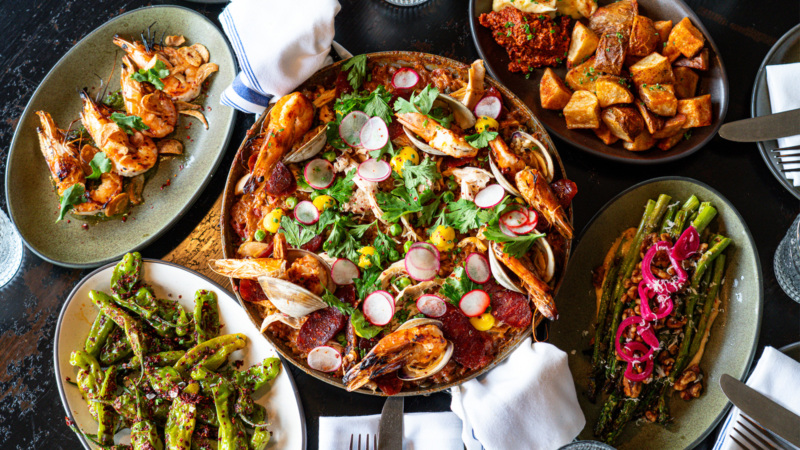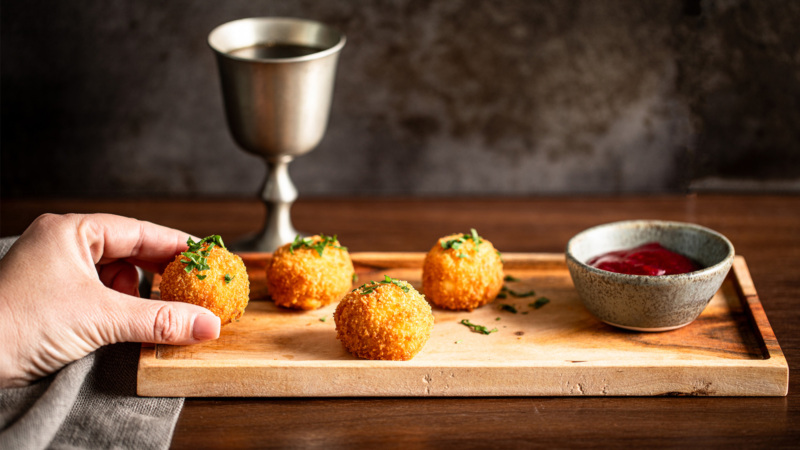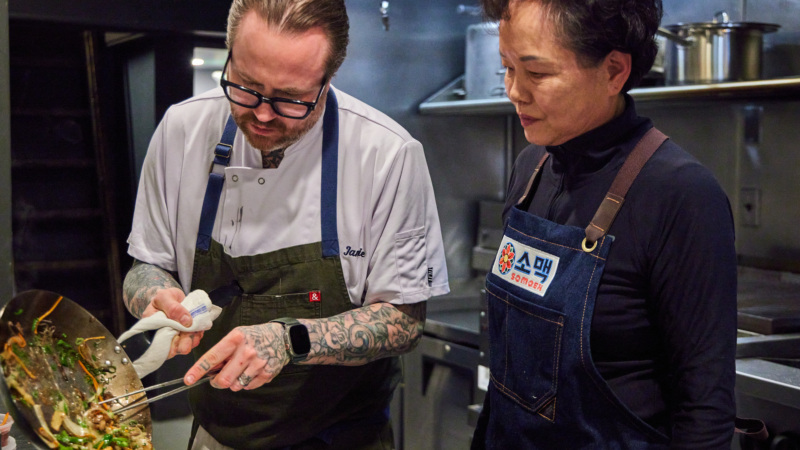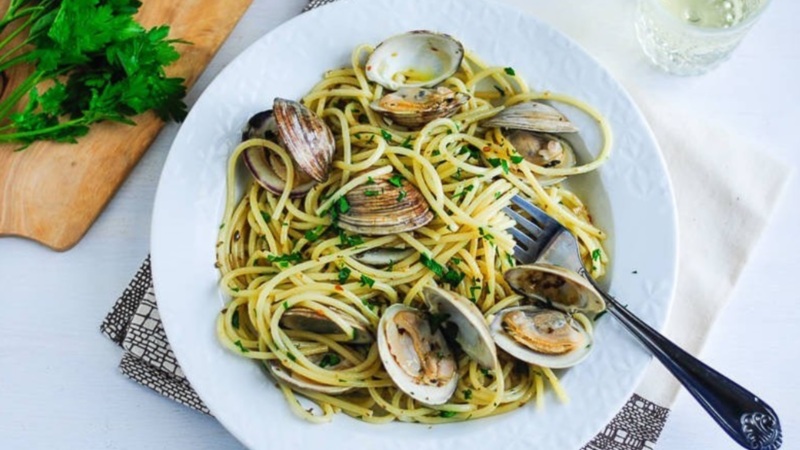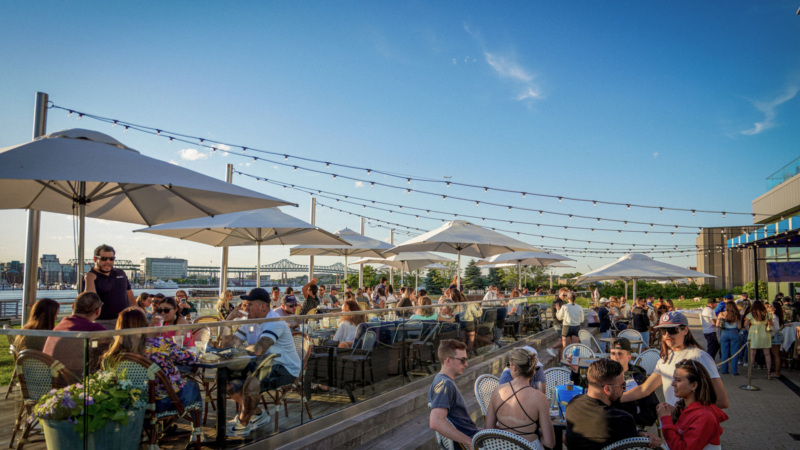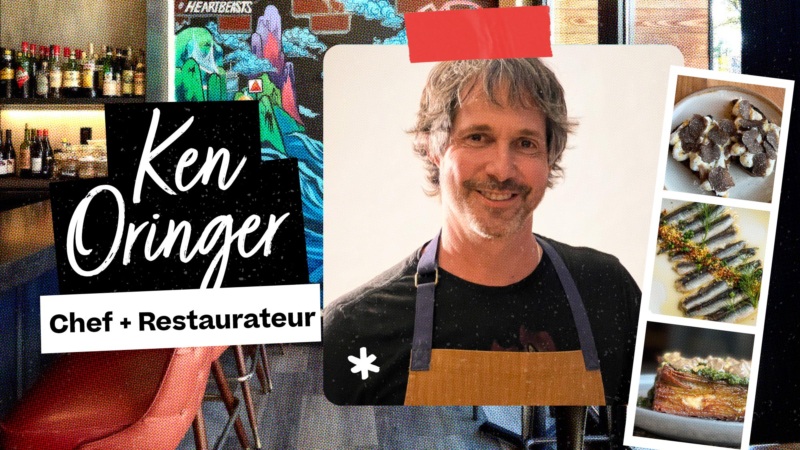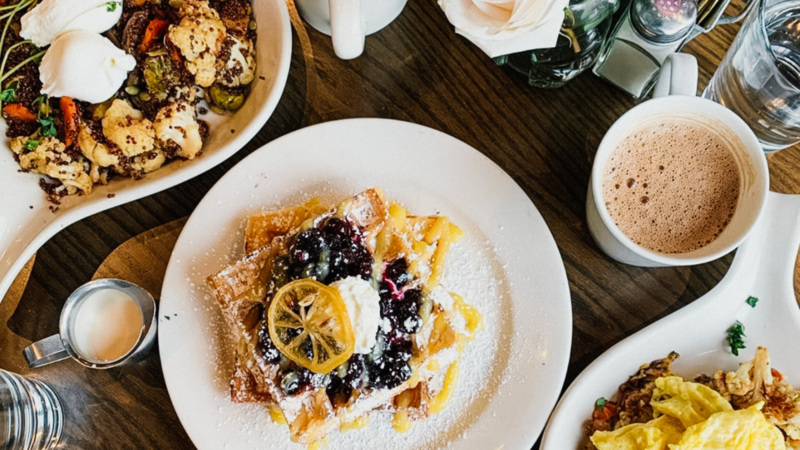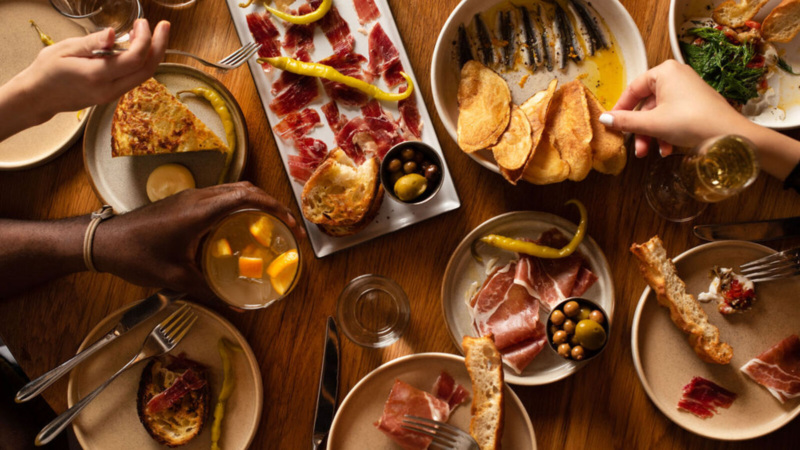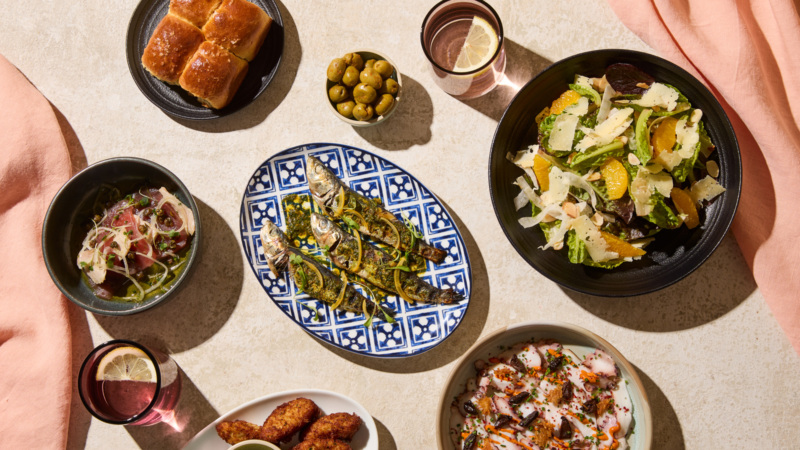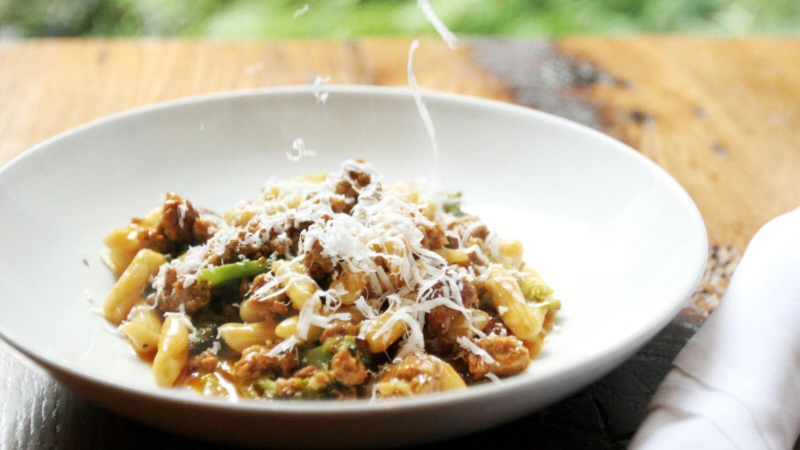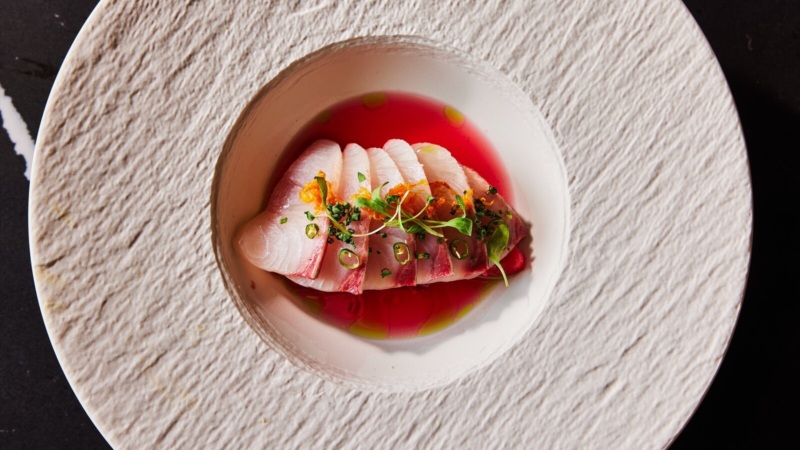
Five Essential Things to Know About Faccia Brutta in Back Bay
Before you go to a restaurant, what do you want — or need — to know most? In our series, The Rundown, we’re sharing all the essentials about newly opened (as well as some of your favorite) restaurants.
Few occasions can seize the collective attention of Boston’s dining community like a restaurant opening from Ken Oringer and Jamie Bissonnette. The culinary combo responsible for such longstanding hits as Toro, Coppa and Little Donkey (which together comprise the JK Food Group) have opened Faccia Brutta, their first new local restaurant in six years. (Note: As of October 2022, the restaurant changed its name to Faccia e Faccia.)
The bi-level, Newbury Street establishment — whose name translates to “ugly face,” which Oringer explains is a Sicilian term of endearment — has been a long time coming.
“It’s been in the works since pre-pandemic,” Oringer says. “We wanted to do something coastal Italian, we wanted to do something that had farmers market sensibilities to it, and we wanted a place that had high energy and that was really fun and different.”
Here’s how Faccia Brutta breaks new ground for the Back Bay neighborhood and the chef-owners behind it.
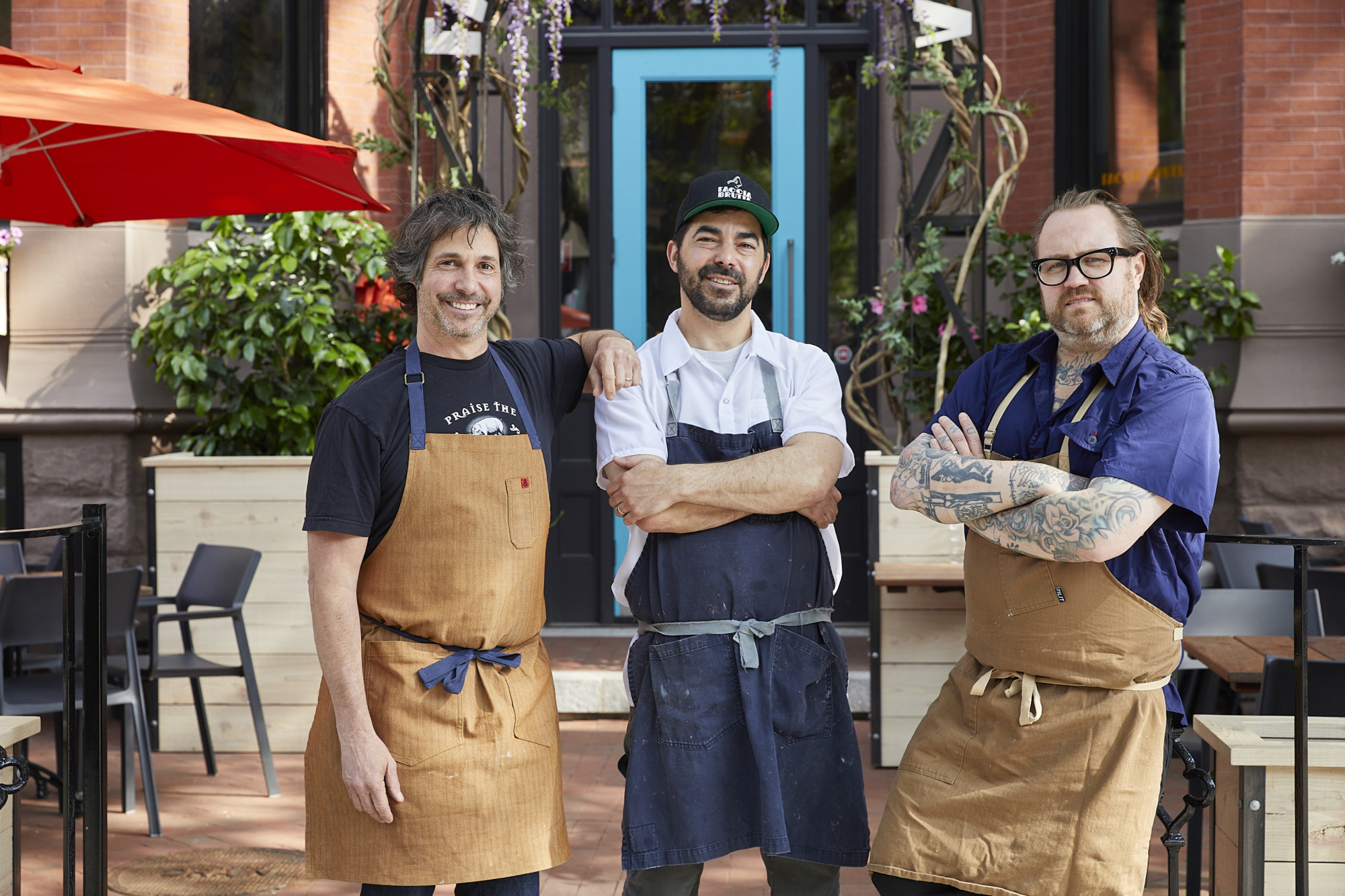
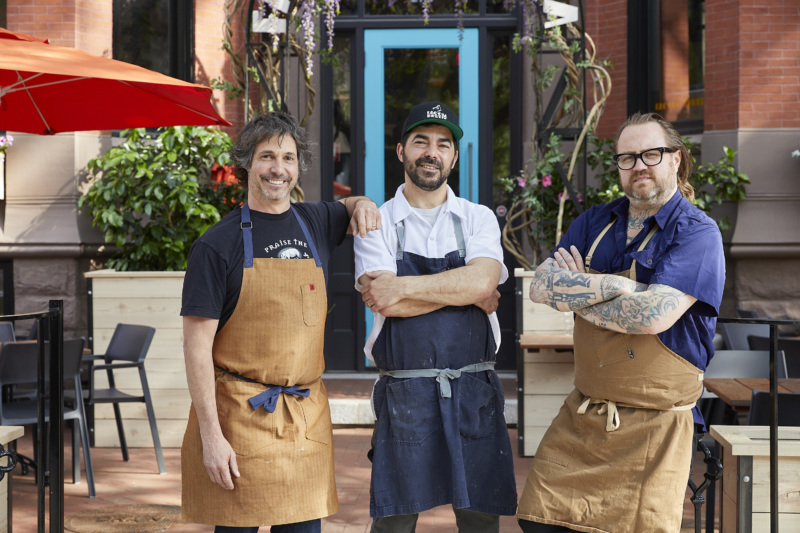
1. It’s the JK Food Group’s first foray into Back Bay.
Oringer is no stranger to the neighborhood, having operated Uni (and its predecessor, Clio) for more than 20 years. But unlike Clio, Faccia Brutta is a part of the restaurant group Oringer co-owns with Bissonnette, and benefits from some of its top talent. Brian Rae, who helmed the kitchen at Coppa for the past five years, serves as its executive chef, and longtime JK Food Group beverage director Jodie Battles joined the restaurant as a partner and curated its natural wine list.
With a team like that, Oringer believes Faccia Brutta has what it takes to shake up Newbury Street’s somewhat staid dining scene.
“I felt that there was a real need for something a little bit different on Newbury Street,” he says. “[It’s] always had some good restaurants, but I don’t think there’s been anyone who wants to open something very ambitious on that street for quite some time.”
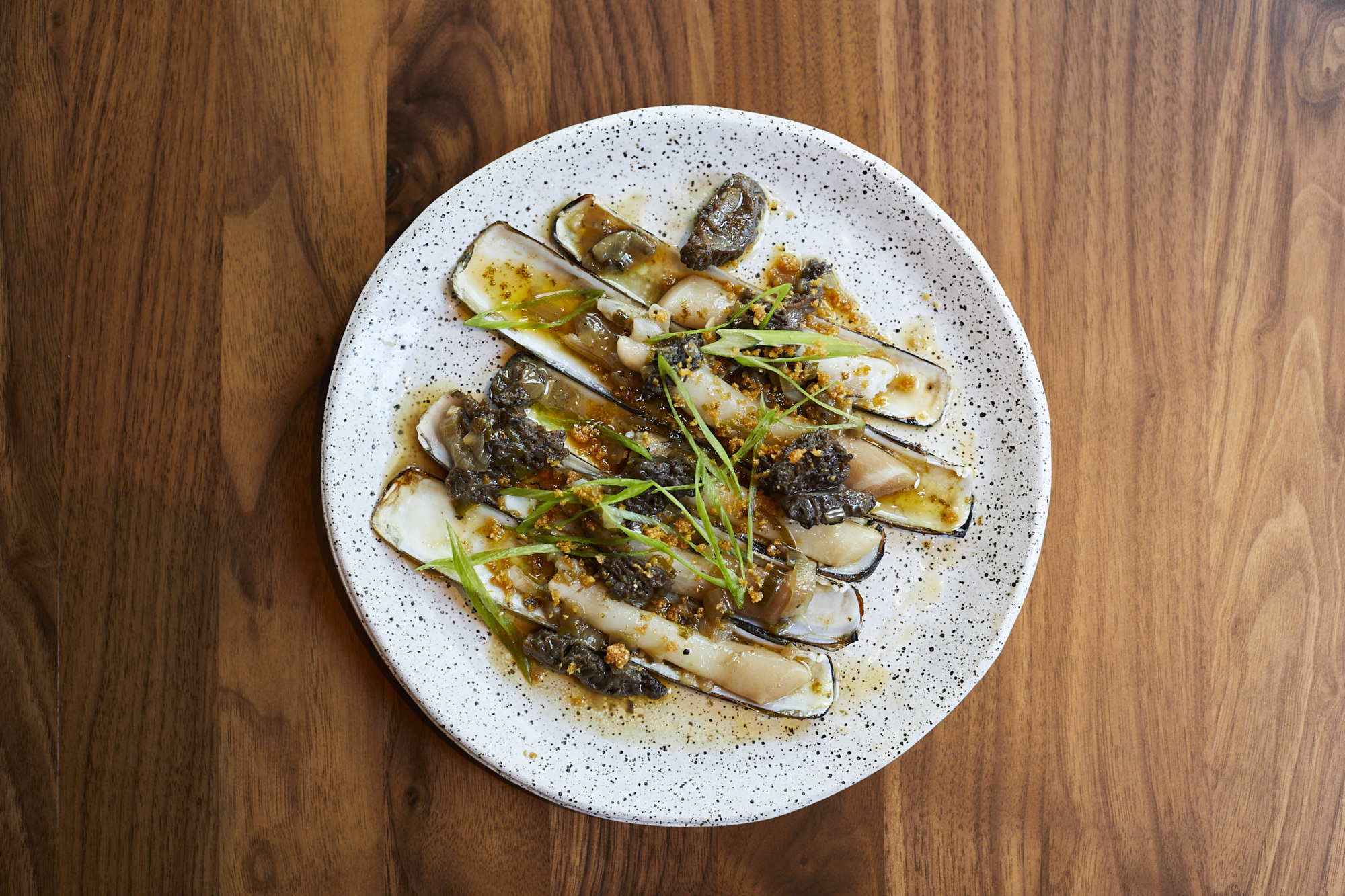
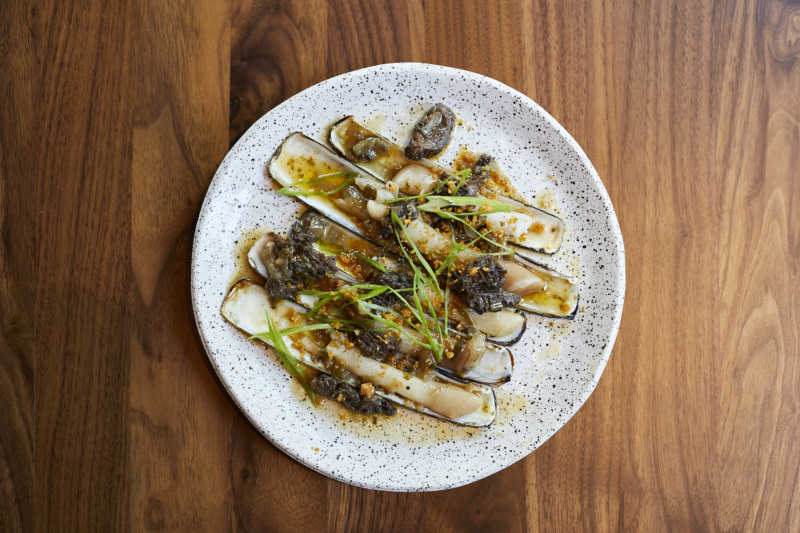
2. The focus is “coastal Italian” — a term that’s open to interpretation.
Faccia Brutta may be the second Italian concept from Oringer and Bissonnette, but it’s a whole other animal from their charcuterie-and-pasta-focused Coppa. Instead, the operating phrase here is “coastal Italian,” a term Oringer defines loosely.
“I’ve traveled the country quite a bit over the years, as has Jamie, and it’s just getting inspiration and trying not to over-complicate these beautiful dishes that you see from north to south,” he says.
In concrete menu terms, that means a dedicated crudo section with selections like sea bream in Sicilian olive oil and cherries, or seafood-centric small dishes like grilled razor clams with crab butter and morels.
Oringer says the focus was inspired by regions across Italy, including Sicily and Puglia, but admits that one portion of the boot wielded particular influence: Liguria. The narrow, mountainous region found on Italy’s Southwest coast is responsible for such dishes as a nettle risotto with porcini and wild mushrooms and a grilled bluefin tuna that’s coated in fennel pollen and served with an almond tabbouleh.
However, the playfulness that defines other JK menus is not lost on Faccia Brutta. The dessert list includes “baked Sorrentina,” a baked Alaska riff made with Sorrento lemon curd, housemade vanilla gelato, and candied citrus.
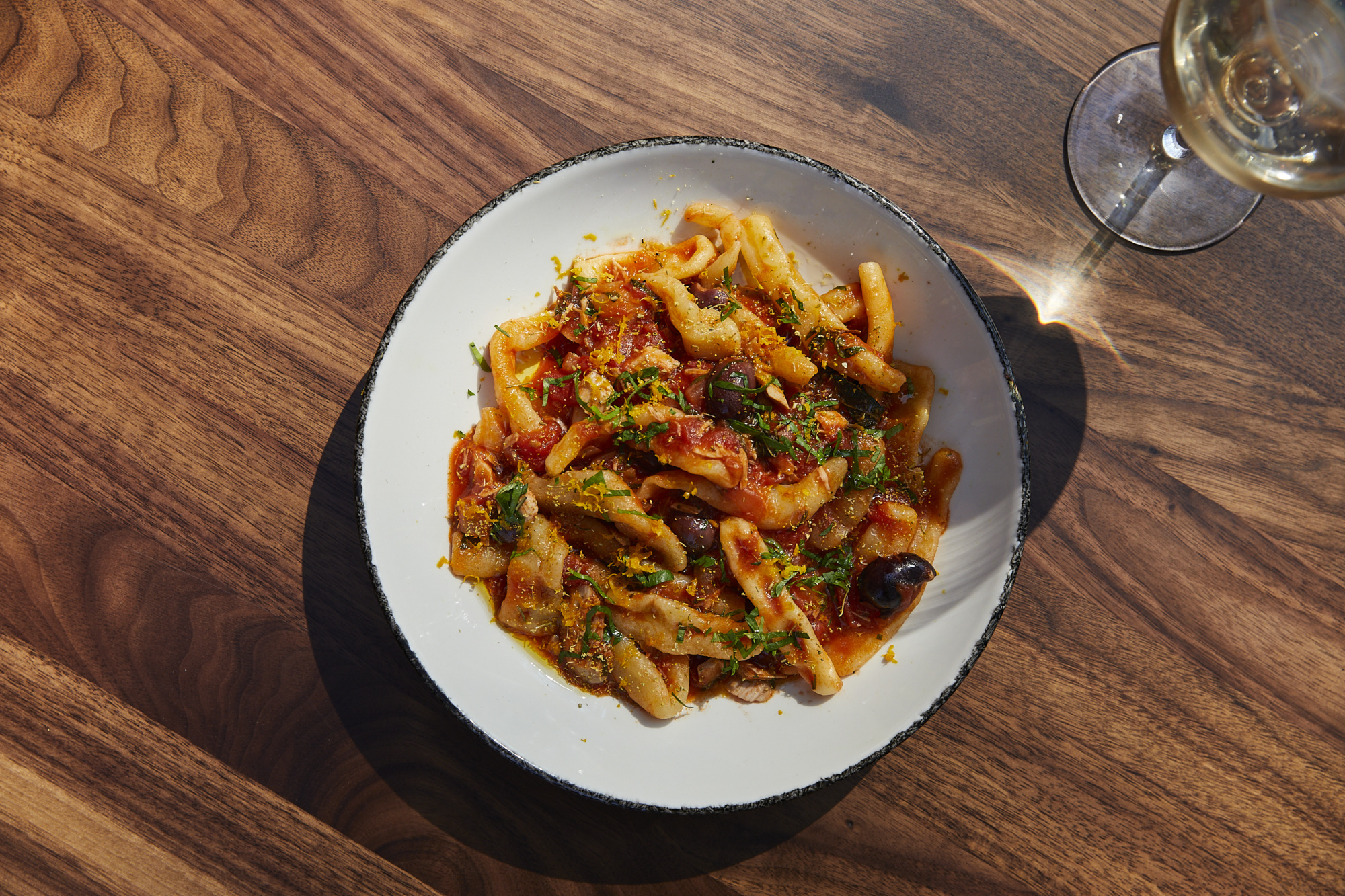
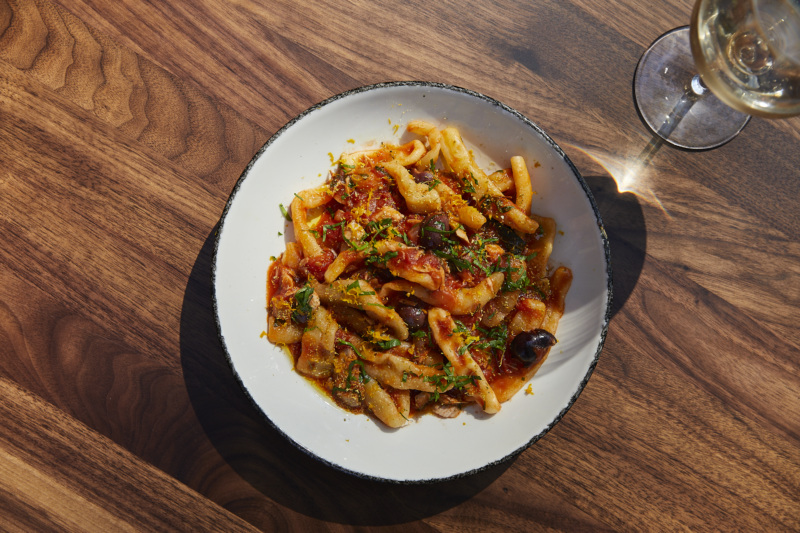
3. Pasta for everyone.
One feature that Faccia Brutta does share with Coppa is an emphasis on housemade pastas; the newer restaurant features eight pastas that are made on-site. Early on, Oringer says that two have emerged as favorites: paccheri with rock shrimp and crab in a spicy tomato sauce, and a spinach-based pansotti that’s hand-filled with Swiss chard and ricotta in a brown butter-walnut sauce.
The restaurant has gone to great lengths to ensure that gluten-intolerant diners can enjoy the dishes as they were meant to be prepared: each pasta shape is also available gluten-free.

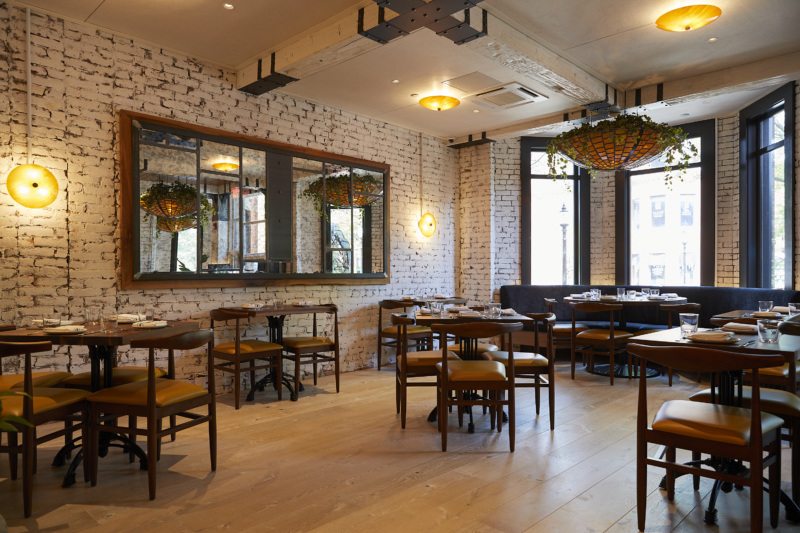
4. You won’t recognize it.
It may be hard for passerby to conceive that the two-floor restaurant with a packed front patio was used for anything other than hospitality in the recent past, but the space’s former tenant was a spa and tanning salon. After the townhouse building was purchased by a new owner it was completely gutted, allowing its new tenants to completely re-imagine the space.
What resulted was an airy upstairs with whitewashed brick walls and flora-festooned light fixtures, constituting the main dining room. But a trip down the stairs takes you to Bar Pallino, a new-concept-within-a-new-concept.
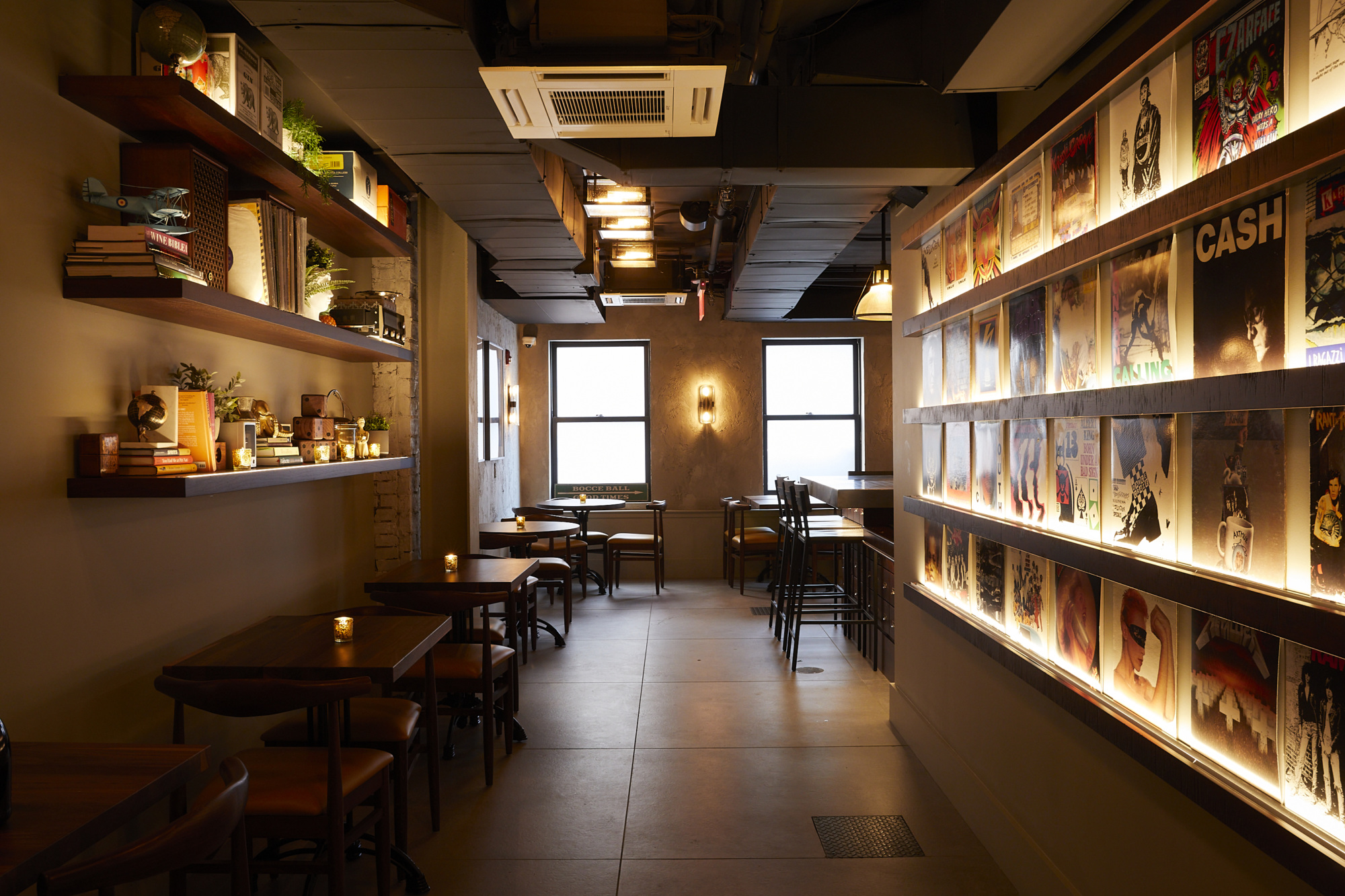
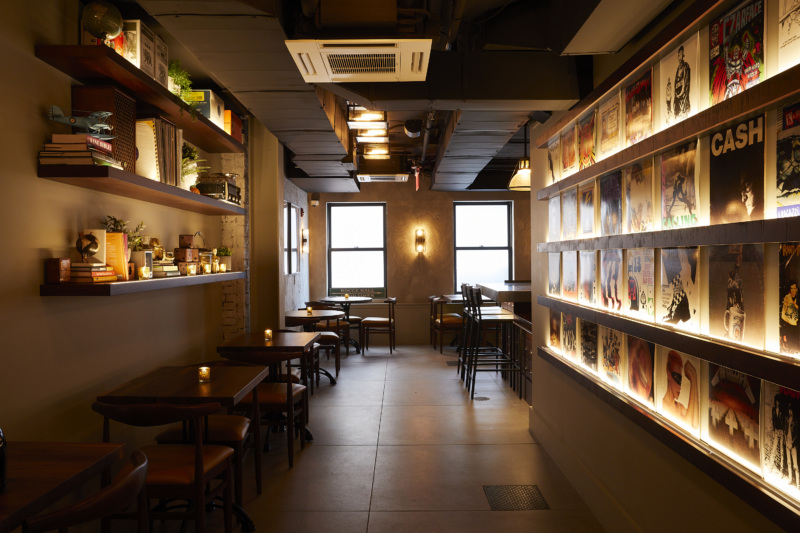
5. Bar Pallino is a whole other world.
Once you’ve made it down the stairs, you’ll pass through a narrow hallway lined with vinyl records that aren’t just for show. The titles are pulled from Bissonnette’s personal collection of over 10,000 records, and at any given time one of them will be spinning behind the bar.
Natural wine rules the day at pint-sized Bar Pallino, but it’s not the only thing that the semi-secret drinking hole is pouring. Pre or post-dinner imbibers can catch a quartet of house Negronis including The Jitney, made with mezcal, Campari, Cinzano, and espresso-infused Spanish vermouth, and a selection of small-scale mezcal brands favored by Battles and Oringer.
“I’ve been a huge mezcal lover for a long, long time,” Oringer says of the seemingly out-of-the-blue inclusion. “You you see a lot of mezcal in cool cocktail spots around Italy and Europe now, so we wanted to feature a decent number of mezcals down there too.”
The little sister-space even maintains its own separate menu of snacky food items, which are written up on a piece of wax paper hanging by the bar. Expect foie gras torchon, burrata, and caviar, and Gilda, a type of Spanish pinxto made by skewering olives, peppers, and meat.
Faccia Brutta and Bar Pallino may be an eclectic combination, but both call back to what’s long been an organizing principle for the restaurant group and its owners: fun.
“I’m just super-psyched to be open,” Oringer says of the restaurant as a whole. “It’s been a long battle, and it’s just great to see people eating food, drinking, and having a good time.”










